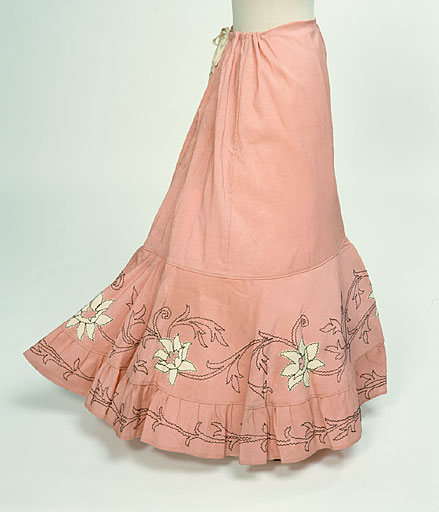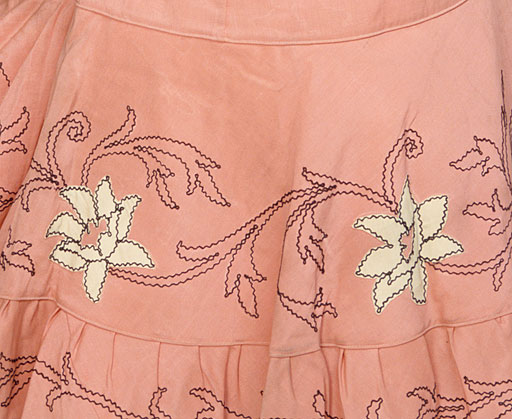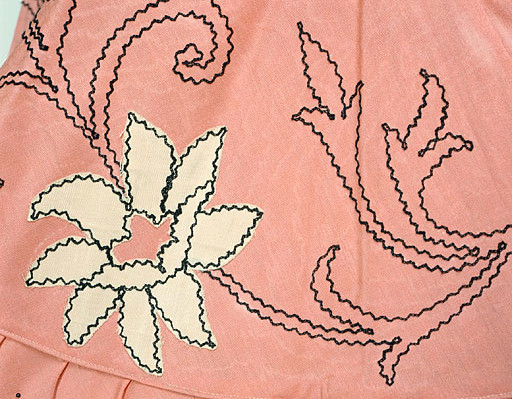petticoat
Summary
Pink moiré alpaca with running flower and stem pattern embroidered in chain stitch in black silks, flowers in white cotton appliqué, crude workmanship.
Display Label
Fashionable silhouettes in the past, especially in female dress, usually required underpinnings of some kind to provide the overall shape, and this was often performed by underwear of one type or another. Crinolines, bustles, hoops, "bum rolls" and pads were all actual structures attached at the waist to push out the skirt to the sides and back; more frequently, a fuller skirt was achieved by layers of different petticoats. Just before the adoption of the crinoline in the later 1850s, an evening outfit might have required perhaps eight different cotton underpetticoats to give sufficient bulk. By the later nineteenth century, with sleeker, more fitted styles, three or four had become the norm, less in summer. As the few selected examples shown below demonstrate, petticoats in the nineteenth century were not always white, with pink, purple and brown amongst many brighter colours chosen. In the 1920s, such custom was swept away in the wake of rising hemlines and slim boyish styles. A single silk or rayon princess-line petticoat became usual, minimising any bulk below the outer dress. Even so, as with the earlier periods, petticoats were used to provide a barrier layer which could be laundered, protecting the dress, which might be silk or highly decorated, from the wearer.
Object Name
petticoat
Date Created
1890-1900
accession number
1938.6
Collection Group
Place of creation
England
Medium
Legal
© Manchester Art Gallery



